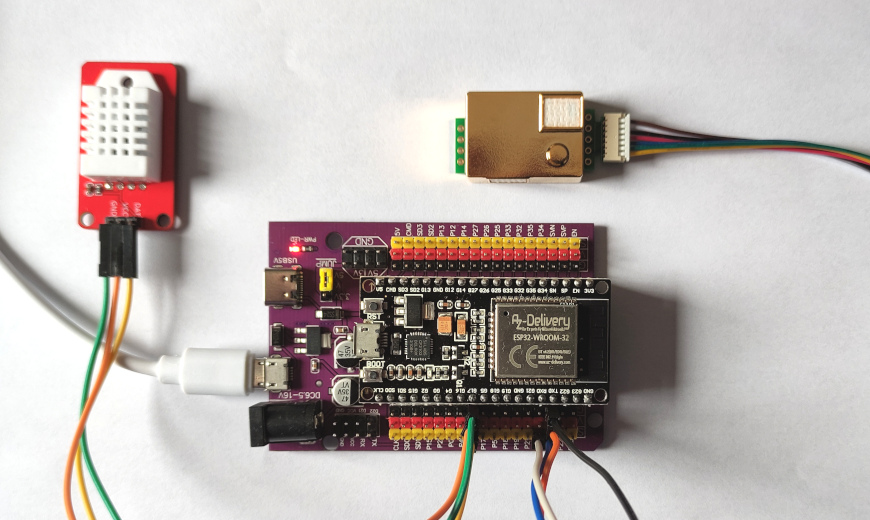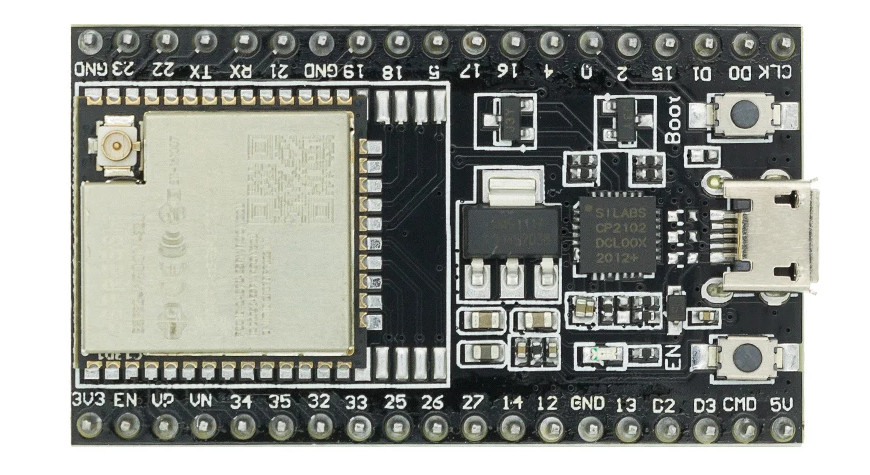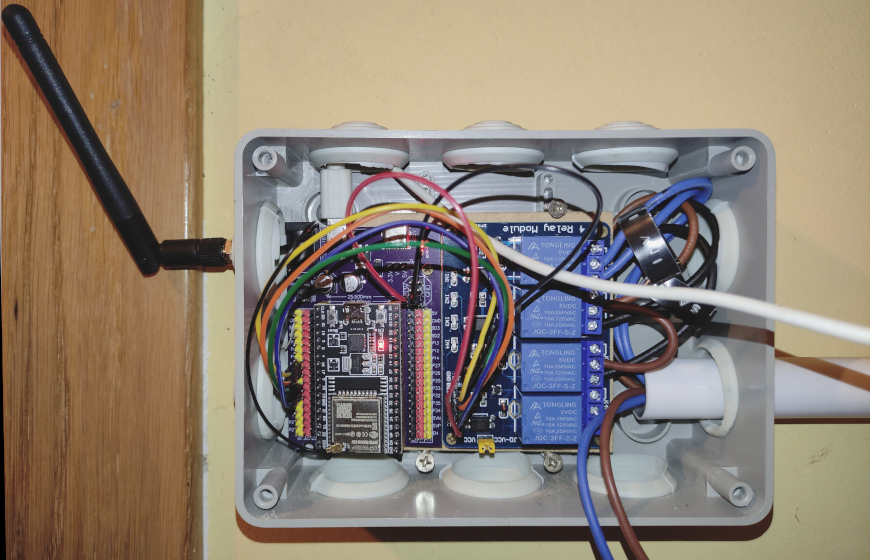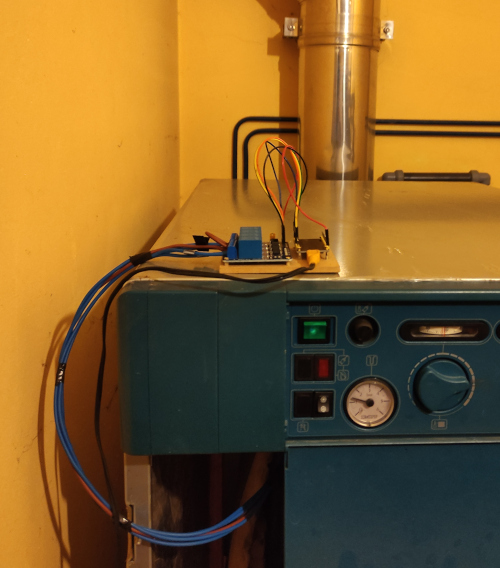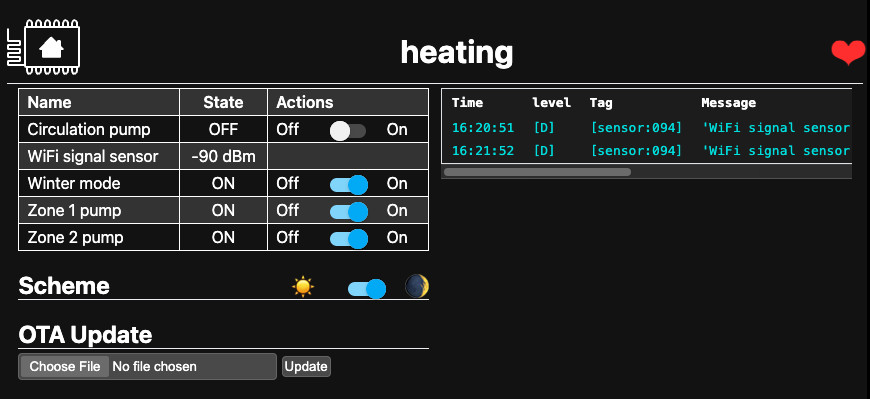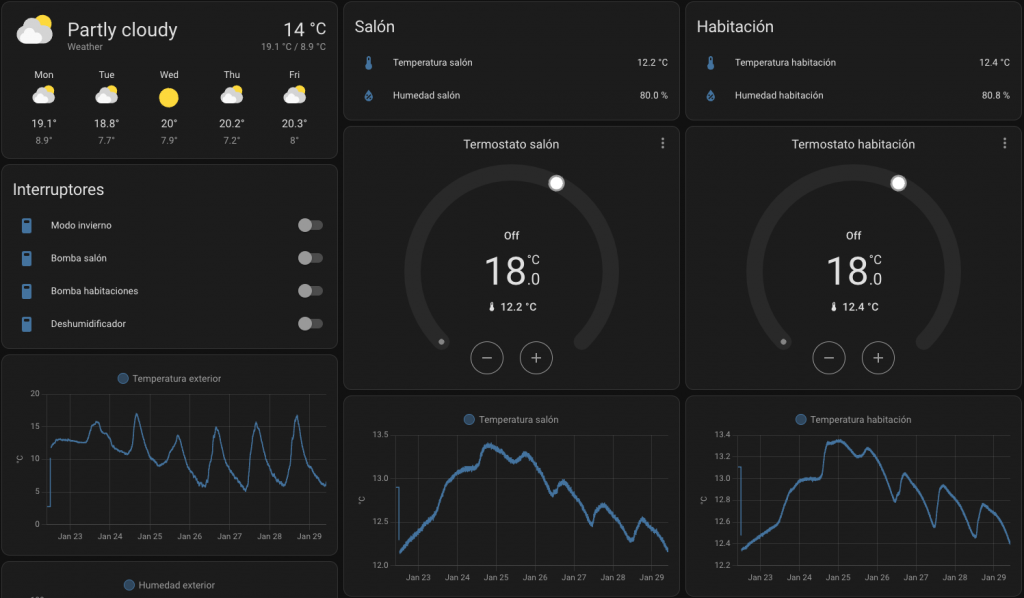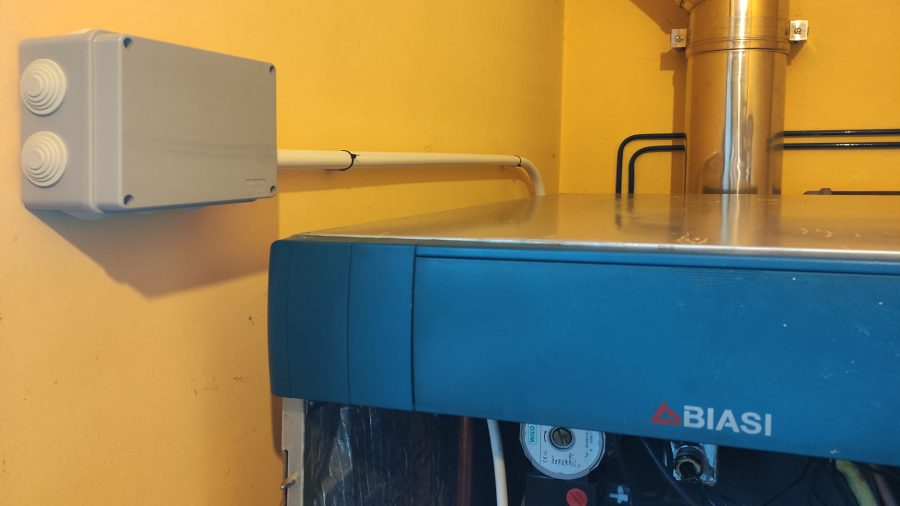CO2 sensor with LCD and ESP32-C3 Supermini
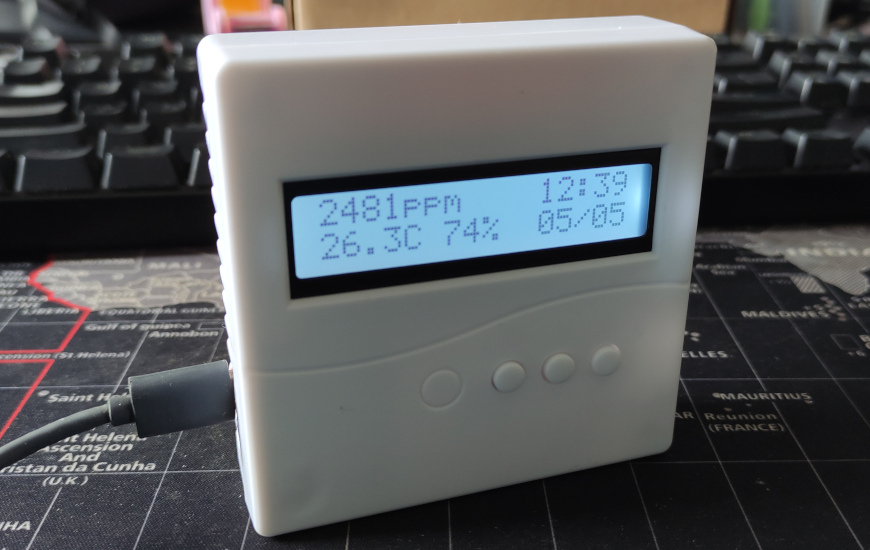
I wanted to add an LCD screen to my CO2 sensor, so I bought a white LCD 1602 with an I2C controller. The I2C controller needs to be soldered to the LCD, but my basic soldering skills were sufficient for the task.
I also wanted to place it in a box, so I purchased this plastic enclosure but I cannot recommend it. It required a lot of glue from a glue gun to install the LCD and the ESP. I also had to use the soldering iron to create space for the ESP and a hole for the USB connector. I installed the plastic buttons but they are only decorative.
I made room for the sensors inside the box, but finally left them outside because they are more precise that way.
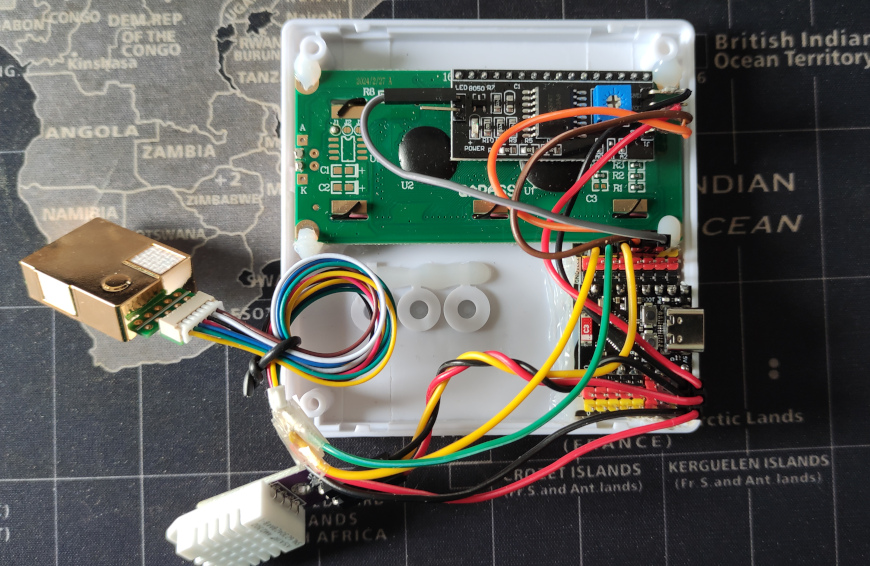
The ESP32-WROOM-32 was too large for the enclosure, so I used a ESP32-C3 Supermini with an expansion board. This is a really amazing board with a 32-bit RISC-V 160MHz microcontroller, WiFi, Bluetooh, I2C and UART. It’s not as powerful as the ESP32-WROOM-32 with a dual core 32-bit Xtensa 240Mhz, but it’s more than capable to control the sensors and the LCD.
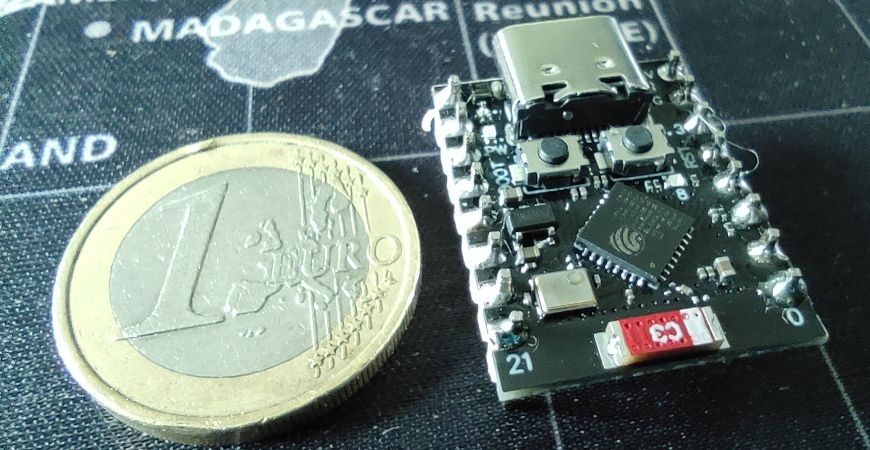
This is the ESPHome configuration, which includes a switch to control the LCD backlight and a clock synchronizing the time with Home Assistant:
esphome:
name: co2sensor
friendly_name: CO2 Sensor
esp32:
board: esp32-c3-devkitm-1
framework:
type: arduino
logger:
level: ERROR
api:
password: ""
ota:
platform: esphome
password: ""
wifi:
ssid: !secret wifi_ssid
password: !secret wifi_password
reboot_timeout: 90s
ap:
ssid: ${friendly_name} Hotspot
password: !secret wifi_password
captive_portal:
web_server:
port: 80
debug:
time:
- platform: homeassistant
id: homeassistant_time
timezone: "Europe/Madrid"
uart:
rx_pin: GPIO20
tx_pin: GPIO21
baud_rate: 9600
i2c:
sda: GPIO8
scl: GPIO9
sensor:
- platform: uptime
name: Uptime
filters:
- lambda: return x / 60.0;
unit_of_measurement: minutes
- platform: wifi_signal
name: "WiFi signal sensor"
update_interval: 60s
- platform: dht
model: AM2302
pin: GPIO10
temperature:
id: "dht22_temperature"
name: "DHT22 Temperature"
humidity:
id: "dht22_humidity"
name: "DHT22 Humidity"
update_interval: 50s
- platform: mhz19
co2:
id: "mhz19_co2"
name: "MH-Z19 CO2"
temperature:
id: "mhz19_temperature"
name: "MH-Z19 Temperature"
update_interval: 60s
automatic_baseline_calibration: false
display:
- platform: lcd_pcf8574
dimensions: 16x2
address: 0x27
update_interval: 1s
lambda: |-
auto time = id(homeassistant_time).now();
it.printf(11, 0, "%02d:%02d", time.hour, time.minute);
it.printf(11, 1, "%02d/%02d", time.day_of_month, time.month);
auto co2 = id(mhz19_co2).state;
if (!isnan(co2)) {
it.printf(0, 0, "%.0fppm", co2);
}
it.printf(0, 1, "%.1fC", id(dht22_temperature).state);
it.printf(6, 1, "%.0f%%", id(dht22_humidity).state);
switch:
- platform: gpio
pin: GPIO7
name: "LED Backlight"
id: led_backlight
restore_mode: ALWAYS_OFFAnd the full BOM:
